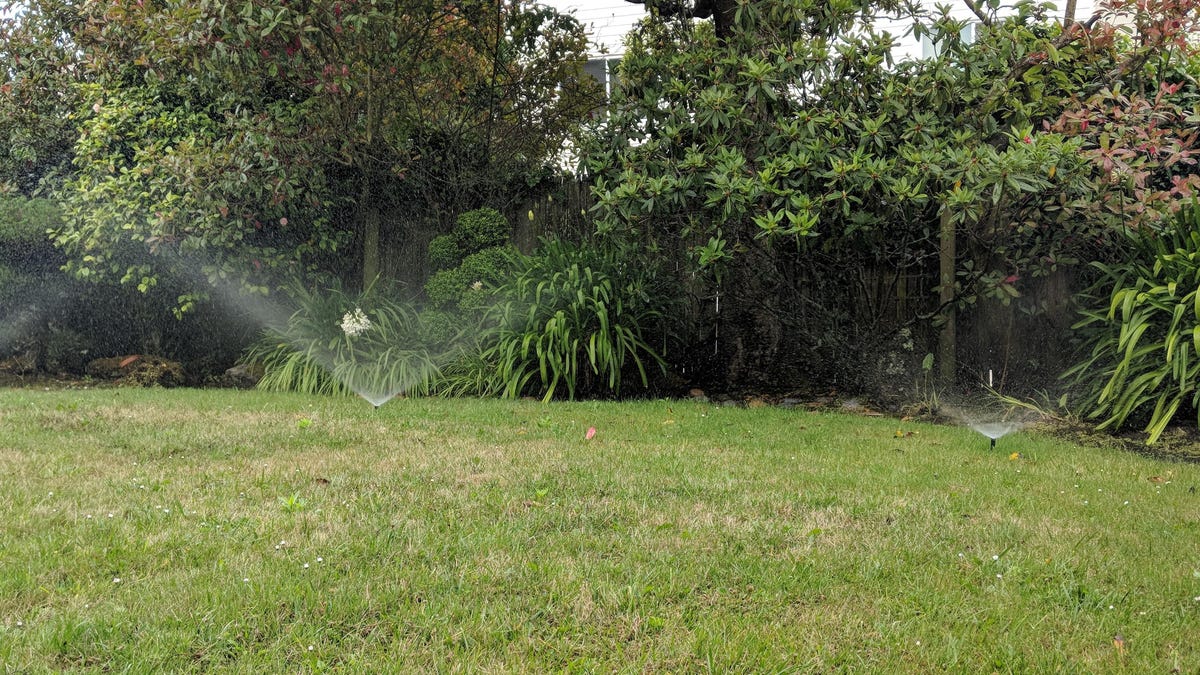 Why You Can Trust CNET
Why You Can Trust CNET The right way to water your garden and lawn
Save water and save money while keeping your garden healthy.

Your garden needs less water than you think. Whether there's a drought in your area or you just want to save on your water bill, there are there are plenty of ways use less water and still keep a healthy garden.
Here's a smart watering plan to get the most out of your garden without any waste.
Water less, but deep
Many people think you need to water your plants every day to keep them healthy, but that just isn't true. Give your plants at least 1 inch of water during a weekly watering. If it rained recently, you can water even less.
The key to watering once a week is to water "deep." This means watering slowly so it has a chance to sink in to the ground instead of running off or evaporating. Deep watering also encourages root growth, making plants more resilient in high temperatures.
To accomplish a deep watering, use soaker hoses or set your automatic sprinklers so that they run for a short amount of time, pause to let the water sink in, and then resume watering. (If that sounds too complicated, skip down to the section about smart, automated solutions.)
Be sure to measure. Like I mentioned before, you want at least an inch of water to sink in around your plants. With sprinklers, place a simple rain gauge in the middle of your garden to measure how much moisture your plants are getting during a timed watering session. Adjust your watering duration accordingly. If you hate going outside repeatedly to check the rain gauge, get a digital version, such as models from AcuRite, Oregon Scientific or La Crosse Technology, which will send readings to your phone.
When using a soaker hose, you can have a hard time guessing how much water your plants are getting. There's an easy fix. Set the soaker hose out for an hour. Then, dig down in the soil to measure how far the water penetrated. If the water hasn't reached deep enough, keep watering and checking. Each type of soil and planting location will be different, so keep experimenting until you hit the sweet spot.
Save drinks for the morning
Early mornings are the best time to water your plants. There is less sun and wind to evaporate the moisture before your plants are nourished, saving water overall. Watering in the morning also gives plants the fuel they need to flourish throughout the day.
Get rid of weeds
Daily weeding can help save water, too. Weeds steal moisture from your plants so that they need to be watered more often, according to the University of California.
If you hate weeding, consider covering the ground around your plants with water-permeable landscape fabrics, like those made by ECOgardener or GardenMate. These fabrics block the growth of weeds while still letting water get to the roots of your plants.
Let tech do all the hard work
If you're convinced that your veggies or flowers need more than one watering per week, invest in a moisture monitor, such as the sPlant Soil Tester or the Flower Care 2. These monitors will alert you when the soil around your plants get dry, either through an app or a caution light system. You may be overwatering without even knowing it.
You can also set up a smart sprinkler system that will run your sprinklers according to weather changes to prevent overwatering, totally taking out the guesswork. The Rachio Smart Sprinkler Controller Generation 3 and the Blossom 8 are both good choices. Systems like this will also take into account the many factors – soil type, soil quality, weather, sun exposure and even landscape type (such as the side of a hill) – that affect the way your garden grows.
They will automatically adjust your sprinklers to water when your plants need it. Plus, you can track waterings using an app on your phone or through smart assistants such as Alexa and Google Assistant.
Want to make watering your lawn easier? Here's CNET's guide to making your own automated lawn watering system.
Originally published March 30, 2018.
Update, March 21, 2019: Republished for spring 2019.

